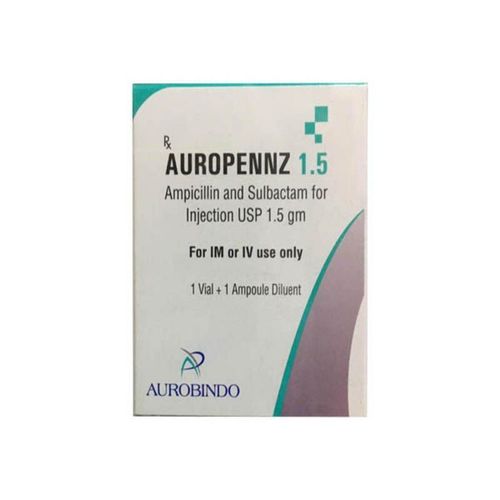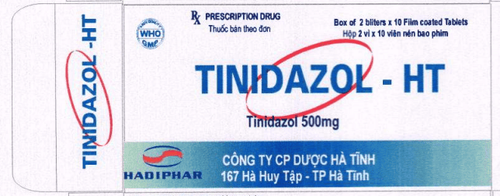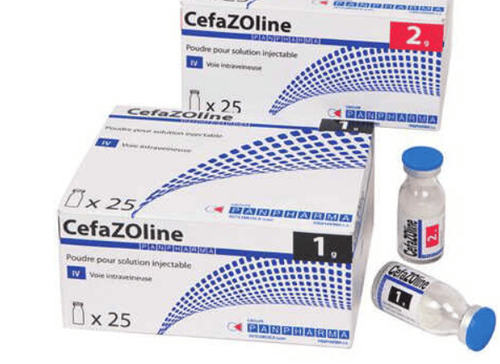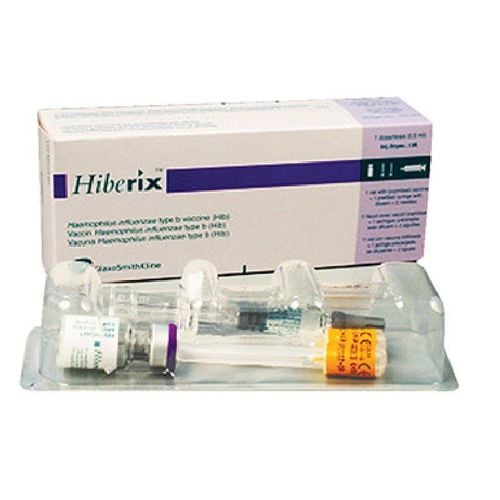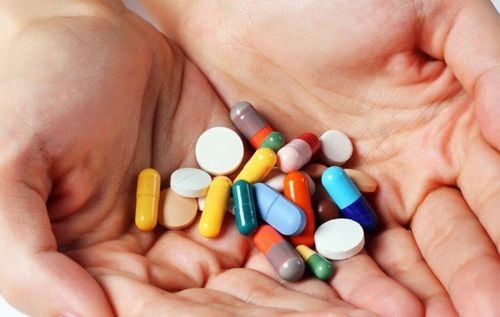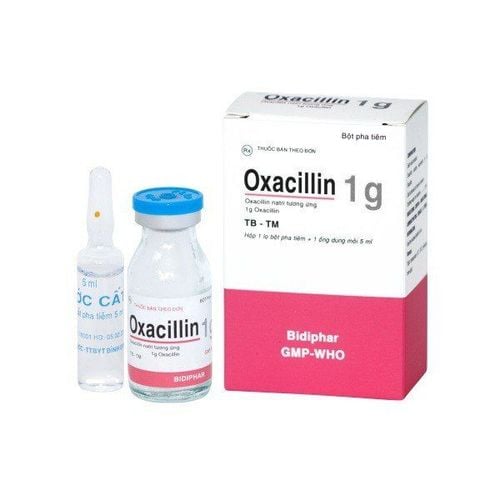This is an automatically translated article.
Dexaperazone is an antibiotic, used to treat bacterial infections. The drug is prepared in the form of a powder for injection and is prescribed for use as directed by a doctor, under the supervision of medical staff. To better understand the use of Dexaperazole is what? Please read the article below.
1. Composition, dosage form of Dexaperazol
Ingredients:
Sulbactam sodium; 500mg Cefoperazone sodium; 500mg Other excipients just enough. Dosage form: Dexaperazon is prepared in the form of powder for injection.
2.Indications for use of Dexaperazone
Dexaperazon is used to treat infections caused by sensitive bacteria:
Upper respiratory tract infections: Rhinitis, sinusitis, pharyngitis,...; Lower respiratory tract infections: Bronchitis, pneumonia...; Genitourinary - urinary infections; Infections of the liver, bile; Bacterial peritoneal infection; Gynecological infections ; Endocarditis; Infection after surgery; Sepsis ; Meningitis; Prophylactic treatment after surgery; Skin and soft tissue infections; Musculoskeletal infections; Pelvic infection; Gonorrhea .
3. Uses of Dexaperazine
Dexaperazone is an antibiotic with a broad spectrum of antibacterial activity. The use of the drug is also the use of the two main ingredients Cefoperazone and Sulbactam. Cefoperazone is a 3rd generation, semi-synthetic, third-generation cephalosporin antibiotic that has a bactericidal effect by inhibiting the synthesis of the growing and dividing bacterial cell wall. Cefoperazone is very stable against beta-lactamases formed by most gram-negative bacteria. Therefore, Cefoperazon has strong activity on a broad spectrum of gram-negative bacteria, including penicillinase-producing strains of N. gonorrhoeae and most strains of Enterobacter, Morganella, Citrobacter, Proteus, Providencia, Salmonella, Shigella and Serratia spp. Sulbactam is an active substance similar in structure to beta lactam but has very weak antibacterial activity. Therefore, it should not be used alone in clinical practice. Sulbactam, when attached to beta lactamase, will inactivate the enzyme, thus protecting the beta lactam antibiotics from being degraded.
4. Dosage - How to take Dexaperazol
How to use Dexaperazone: The drug can be administered intramuscularly or intravenously.
Reference dosage for adults:
For mild or moderate infections: Dosage 1 -2 grams/ 12 hours/time x 02 times/day. Severe infections: Dosage up to 2 -4 grams / 12 hours / time x 2 times / day. Dosage for children: 25-100mg / kg / 12 hours / time.
Dosage for patients with liver failure or biliary obstruction should not exceed 4g/24 hours.
The above dosage is for reference only, the specific dose depends on the age and condition of the patient.
5. Overdose of Dexaperazol
When drug overdose, high concentration of β-lactamase antibiotics in the cerebrospinal fluid can cause effects on the nervous system such as: seizures, convulsions. This should be carefully monitored.
Treatment of overdose: Patients need to be dialysis or hemodialysis to remove active substances from the body combined with treatment of symptoms and complications if any.
6. Contraindications when taking Dexaperazol
Patients with a history of allergy to penicillins, sulbactam, cefoperazone or any other antibiotic of the cephalosporin group.
7. Interactions Dexperazone with other drugs
Alcohol, other alcoholic beverages: When combined, it will cause a hot flush reaction, sweating, headache, fast heart rate. Aminoglycoside antibiotics: when Dexaperazone and Aminoglycosides are combined together, the effect of the drug will be reduced. Anticoagulants. Thrombolytic drugs. Non-steroidal anti-inflammatory drugs due to the potential for bleeding. The drugs Amikacin, Gentamicin, KetamycinB, Doxycycline, Meclofenoxat, Ajmaline, Diphenhydramine, Potassium magnesium, Aspartate used concurrently with Dexaperazone to avoid precipitation. Hydroxylamine hydrochloride, Procainamide, Aminophyllin, Prochlorperazine, Cytochrome C, Pentazocin, Aprotinin, when combined with Dexaperzone, after 6 hours, change the properties of the drug.
8. Side effects when using Dexaperazol
Clinical studies show negligible side effects when taking the drug. Some undesirable effects of the drug include:
Digestive disorders. Diarrhea. Nausea, vomiting. Allergic, erythematous skin reactions. Decreased red blood cells and platelets. Dexaperazone is an antibiotic used to treat bacterial infections. The drug is prescribed by the doctor's prescription, the patient should not arbitrarily buy Dexaperazon for treatment at home because it may experience side effects or interact with other drugs that are life-threatening.




